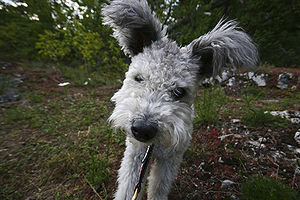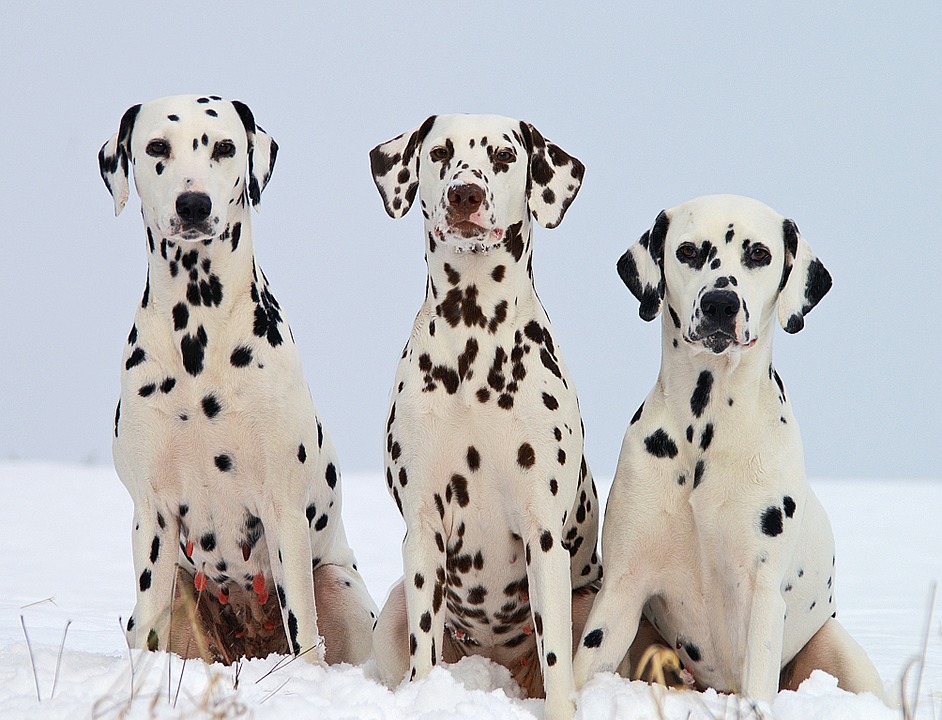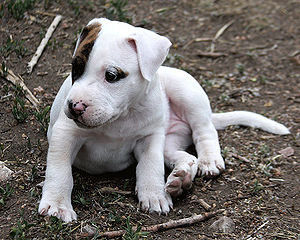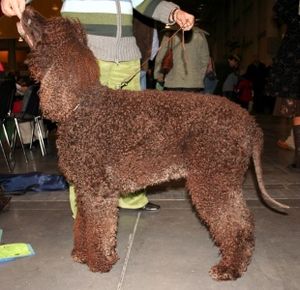 |
| Vital Statistics: |
| Place of Origin: Hungary |
| Group: Herding dog |
| Height: males 16-18 1/2 in.; females 15-17 1/2 in. |
| Weight: males 22-29 lbs.; females 22-24 lbs. |
| Life span: 12-15 yrs., but can live longer |
| Trainability: high |
| Good with children: yes, if treated nicely |
| Good with other pets: yes, with supervision |
What is the Origin of the Pumi?
The Pumi is a Hungarian breed of dog. First developed in the 1700s, it is a mixture of terrier-type herding dogs. The Pumi was little known outside of Hungary until the 1970s in other parts of Europe. It was introduced in the United States in the 1990s. The plural of Pumi is Pumik.
What does the Pumi look like?
The Pumi male is 16-18 1/2 inches and weighs 27-29 lbs.; the female stands 15-17 1/2 inches and weighs 22-24 lbs. Pumik ears are the outstanding feature – set high and bent at the tips, the hair is long. The coat is double, wavy and curly at the same time, appearing as corkscrew curls over the body. Facial hair is short. Colors are any shade of gray, black, white, shades of fawn with black or gray shading. Pumik shed very little, but the coat should be stripped, trimmed and combed regularly.
What is the temperament of the Pumi?
The Pumi is an active dog, intelligent and alert. They can be guarded with strangers so early socialization is important. As a herding breed, they are often called on to make their own decisions. They need consistency with training, always with a firm but kind hand. Pumik are good with children who do not play roughly. They are usually good with other pets, but should be supervised. This active breed needs lots of exercise – jogging, swimming, hiking, play. Apartment living may be difficult unless the Pumi is offered daily, vigorous exercise. Pumik are good watchdogs but have a loud, sharp bark which can be disturbing to neighbors.
What is the Pumi used for?
Pumik were used to herd sheep, cows, pigs. As a farm dog, they kept the area cleared of rodents. Now they compete in agility and obedience trials and do very well in all dog sports. While devoted to it’s family, the Pumi needs humans who are equally active.
Possible Health Issues
Hip dysplasia, patellar luxation
- Australian Cattle Dog
- Australian Kelpie
- Australian Shepherd
- Bearded Collie
- Beauceron
- Belgian Sheepdog – Groenendael
- Belgian Tervuren
- Bergamasco
- Berger Picard
- Blue Lacy
- Border Collie
- Bouvier des Flandres
- Briard
- Cardigan Welsh Corgi
- Catahoula Leopard Dog
- Collie
- English Shepherd
- Entlebucher
- Finnish Lapphund
- German Shepherd
- Hovawart
- Icelandic Sheepdog
- Laika
- Lancashire Heeler
- Miniature American Shepherd
- Mudi
- Old English Sheepdog
- Pembroke Welsh Corgi
- Polish Lowland Sheepdog
- Puli
- Pyrenean Shepherd
- Shetland Sheepdog
- Standard Schnauzer
- Swedish Vallhund



